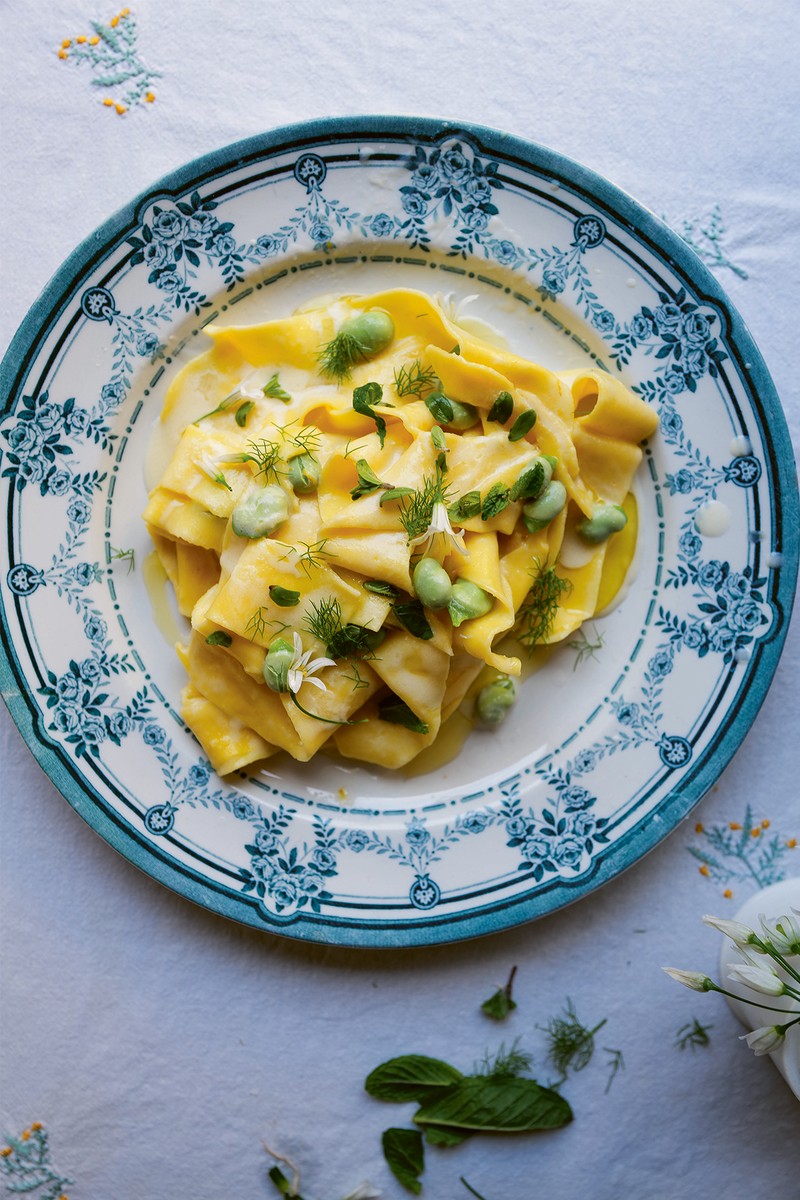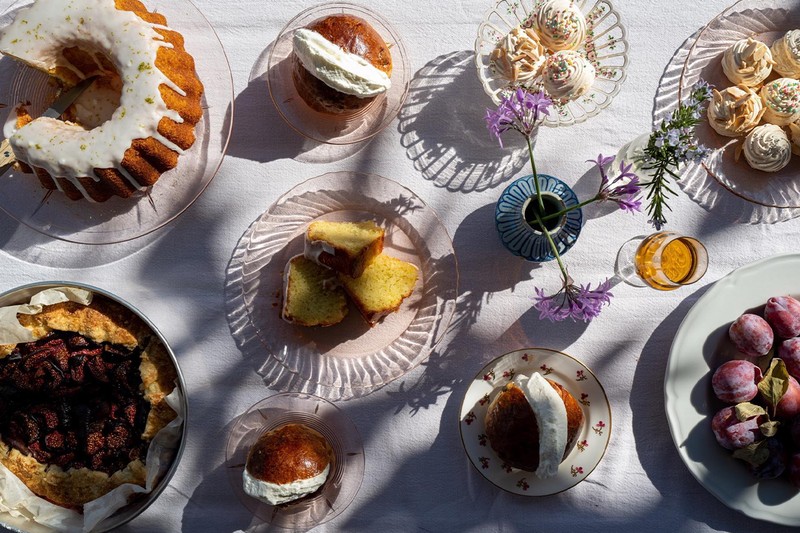A Local Shares Her Favourite Sardinian Spots & Recipes
I love Sardinia because it feels like Italy but not. It’s a little off the beaten track, so it still feels undiscovered. I love it for its authenticity, its traditions, its food, the landscape and the people. I like to describe it as the Wales of Italy, sort of. Or the wilder bits of Australia. Or Ireland with a Mediterranean climate. It’s definitely Mediterranean and definitely Italian, but also a world of its own. Its more ancient and wilder than many parts of the country.
My favourite towns include San Pantaleo, Cabras and Bosa. I also love Alghero on the northwest coast; Santu Lussurgiu is home to lots of waterfalls; Cuglieri has beautiful, quiet beaches. If we’re eating out, I’ll often head to Da Renzo in Siamaggiore, Sa Bell'e Crabasa in Oristano which serves excellent seafood, or the restaurant at Domu Antiga, a boutique hotel in Gergei.
For great coffee head to Cibum or Localino. They also serve delicious food, as does the old Paticceria in Piazza Eleonora – all of them are in Oristano. For aperitivo hour, I like the nearby Temple Wine Bar. If you’re after great wine, head to Cantina Sorres, where you can spend an afternoon at its vineyard.
One hotel I’d recommend is Antica Dimora del Gruccione. The 16th-century palazzo has been owned by the same family for generations. It has homely rooms, a courtyard surrounded by potted lemon trees, and traditional food made with local and organic produce. I also like Canales and Mario Cesare.
Sardinia has a strong culinary identity. Specific and rare pasta shapes, strong flavours, simplicity and good ingredients rule. You’ll find sheep cheeses, fish, strong wines, good beer, and enormous and abundant fruit and veg.
Sardinia is home to the most beautiful beaches. Two of my favourites are Putzu Idu, which is popular with surfers, and Su Pallosu, which is home to turtles and other wildlife.
For a culture hit, go to ancient sites like Barumini, Tharros or Nora. Some are Nuragic, while others are Phoenician, but all are fascinating. Sardinia is all about keeping an open mind. It may not always be the easiest place to get around or find your way in, but perseverance pays off.
Cagliari is a great day trip. You can catch a boat to the city to see the incredible cliffs and secret beaches. Getting the ferries to any of the islands in the north is a good idea, like La Maddalena or Caprera. Dolphin watching or hiking around Baunei is also very special.
I buy food twice weekly from the market in Oristano. I couldn’t live without it. Italian food has lots of rules – as many rules as there are Italian cooks – but the most important thing is to enjoy yourself in the kitchen, because you can taste it in the food if the cook is cross. Go easy on yourself, and heavy on the olive oil! And get the best olive oil and lemons you can.
/https%3A%2F%2Fsheerluxe.com%2Fsites%2Fsheerluxe%2Ffiles%2Farticles%2F2024%2F05%2Fsl-letitia-clark-favourite-sardinian-spots-recipes-new-3.png?itok=ymRK51b5)
So many delicious Italian dishes come from Sardinia. I love anything with bottarga, as well as all the pasta dishes, like culurgiones (a type of stuffed pasta) which is from Ogliastra specifically. I love the wine we make here too, especially Vernaccia, which is like sherry and goes well with fish.
I came up with the idea for Wild Figs and Fennel during lockdown. My twice-daily dog walks in the countryside where I live kept me sane, and I picked lots of my own food when I could, and watched the landscape as it changed with the seasons. I wanted to write about a full year of produce and what to do with it, and about a whole year in Sardinia and the way the seasons affect our lives.
One of my favourite recipes from the book is the courgette marrow and lemon jam/confit. It reminds me of my grandmother. I also love the zucchini cake because I am obsessed with zucchini, and the fig and farro frangipane is a winner – and fun to say, too.
If I’m entertaining guests at home, I like to make some vegetable or cheese-based antipasti dishes. It depends on what I find at the market, but I’ll follow this with a pasta dish and a salad, then a creamy fruit dessert. All served with our homemade wine, S’Anatzu.
Follow @Letitia_Ann_Clark on Instagram.
Ready for a touch of la dolce vita?
Here, Letitia shares three recipes from her new book...

Peeled Peaches with Prosciutto, Burrata & Basil
This classic and cooling combination is elevated by peeling the peaches, which is a chore I adore. Plunging a heavy peach into boiling water for a few seconds, then lifting it out to gently rub away its papery skin, is a sensual experience no summer should be without – along with eating seafood spaghetti by the sea and biting into a fig in a sunbeam. The intense and explosive creaminess of burrata means it pairs exquisitely with fruit, but you could replace it with a good mozzarella, which is also mild and creamy enough to work here. The prosciutto adds salt, the basil scent and summer musk. A perfect combination.
Bring a small pan of water to the boil. Remove it from the heat and gently drop in the peaches. Leave them for 10 seconds or so, then remove them with a spoon. Peel the skins away and discard. Slice them in half, then remove the stones.
Tear the burrata in two. Place a half on each plate and sprinkle with salt. Arrange the ham and peaches around the burrata, tear the basil leaves over and drizzle with oil.
Serve with bread.

Egg Pasta Ribbons with Mascarpone, Lemon, Mint & Broad Beans
To make the pasta, place the semolina in the bowl and add the egg to the centre. Using the tips of your fingers, start to stir, breaking the egg and using your fingertips in a whisking motion to mix everything together.
Once the mixture begins to form large flakes, you can start to press and knead the dough with your hands, and bring it together to form a rough lump. Now remove it from the bowl, set the bowl aside somewhere, and start to knead properly on your clean work surface.
Knead well and fairly vigorously, pushing the dough away from you with the heel of your hand, then rolling it back inwards. Turn the dough slightly and repeat the process. You should end up with a smooth, silky lump of dough with no dry or flaky bits. The beauty of making pasta is that it is the opposite of making pastry, none of the nerve-wracking delicacy. Pasta dough likes to be treated with force. Use the dough to pummel out your frustrations of the day.
Wrap the dough in cling film and leave to rest at room temperature for at least 20 minutes. Now it is ready to shape.
In a bowl, mix the mascarpone with the parmesan, lemon zest and a good squeeze of its juice. Season well with salt and add most of the chopped herbs. Taste and adjust accordingly.
Bring a deep pan of water to the boil, add the pasta and cook until just al dente (this will take only a couple of minutes). Cook the beans at the same time in the same water. If they are fresh and small, they should take the same time as the pasta, just a minute or two; if you are using dried pasta, you will need to wait until just a minute away from it being al dente to toss in your beans. Drain, reserving some of the pasta cooking water.
Let the mascarpone down with a little of the reserved pasta water, then toss everything back in the pan and stir until creamy. Add the olive oil and stir/toss again until shiny and creamy. Taste and adjust for seasoning, and serve with some extra herbs sprinkled on top.

Strawberry Tiramisù
This is an homage to both trifle and tiramisù, and an ode to late spring/early summer. Lighter and more child-friendly, it makes a wonderful picnic addition or birthday pudding. If you prefer to keep it non-alcoholic, just use the fresh fruit juice to dip the savoiardi in. If you like, you can make it in a 20cm cake tin and chill it overnight, in which case it will come out nicely birthday cake-like, once you have loosened around the edges with a hot knife.
Choose a container to suit your wishes. You can make this in a trifle bowl to serve in scoops, in individual glasses, or in a gratin dish to serve in squares (or scoops).
Whisk the egg yolks with 100g of the sugar and the vanilla (if using) until thick and mousse-like.
Wash, hull and halve the strawberries. Marinate them in the remaining sugar and the citrus juices plus the glass of moscato. Set aside for 10 minutes while you finish the cream.
Add the mascarpone to the yolks and continue whisking until you have a smooth, pale-primrose cream.
In a separate bowl, whisk the egg whites until you have soft peaks. Fold the whites into the mascarpone mixture and mix gently until smooth.
Delicately dampen and dunk the savoiardi biscuits into the (now abundant) liquid from the strawberries, then begin layering. Start with a layer of soaked biscuits, then decorate with halved strawberries, then a layer of the cream. Repeat.
Place in the refrigerator to firm up (if you want to serve in neat slices) or serve as is, messily. Top with extra strawberries, lemon zest, mint sprigs, or as you see fit.
Wild Figs & Fennel: A Year in an Italian Kitchen by Letitia Clark (Hardie Grant Books) is available to buy now.
Visit Amazon.co.uk
DISCLAIMER: We endeavour to always credit the correct original source of every image we use. If you think a credit may be incorrect, please contact us at info@sheerluxe.com.





